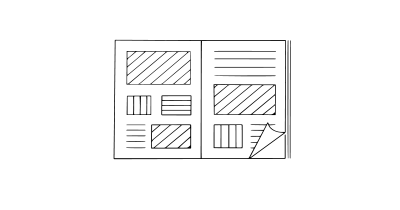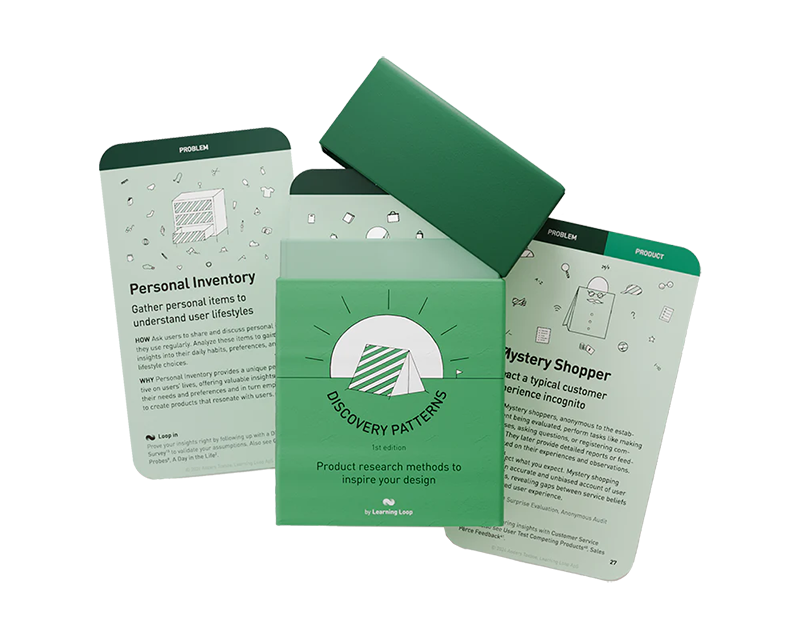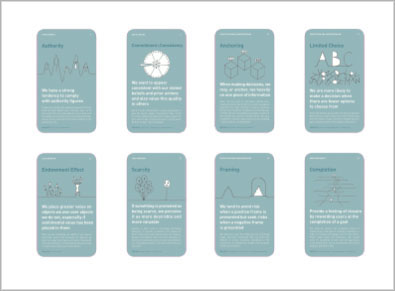
How: Come up with plausible copy and branding that explains your value proposition and its fit between your product or service and customer problems. Distribute them physically at events, cafes, stores, or door-to-door and consider starting or following up with an interview.
Why: When customers are difficult to find online, tracking them down in real life and testing your value proposition with a brochure is a good alternative.
It is a value proposition mockup
Where the Data Sheet focuses on internal qualities and features of your solution, brochures present the external qualities and value proposition of your product: how the product will be able to solve customer problems. Design a brochure that clearly communicates the external qualities and benefits of your product, emphasizing how it solves customer problems. At industry fairs or events, distribute these brochures prominently and track how many are taken by attendees. Additionally, include a call to action in the brochure, such as a contact number, QR code, or unique URL, encouraging recipients to engage further with your company.
The “Brochure” method is a tangible, real-world approach to test your product’s value proposition. Here, you create a mock-up brochure that showcases your product or service and how it solves customer problems. This method is especially effective when your target customers are not easily reachable online. By distributing the brochures at physical locations like events, cafes, or even door-to-door, you can gather first-hand feedback on your value proposition.
Unlike many other methods which are digital and data-driven, the Brochure method is more traditional and hands-on. It allows you to engage directly with potential customers and gather immediate feedback. This direct interaction can provide valuable insights that may not surface through online channels. The brochure itself is also a mini prototype of your product’s messaging and branding, giving you a chance to test and refine these aspects before a full-fledged launch.
Creating a brochure for prototyping
While creating the brochure, ensure it clearly communicates the problem your product is solving, its unique selling proposition, and the benefits it offers. Use appealing visuals and minimal text to capture attention and convey your message effectively. The brochure can serve as a conversation starter, so consider adding a call-to-action that encourages dialogue, such as a request to complete a survey or an invitation to a product demo.
If possible, personalize the brochure distribution process. Target locations where your potential customers are likely to be present. Following up with an interview can also be a good way to delve deeper and gather more detailed feedback.
Choose the Brochure method when you have a clear value proposition, but need to validate it with actual customers. This method is particularly useful when your target audience is difficult to reach online or when you want to test your product’s appeal in a specific location. The tangible, physical nature of a brochure can also make your product more real and relatable, which can be a strong advantage in early stages of product development.
The Brochure method can be effectively paired with methods like Data Sheet and Write Down Your Concept. A Data Sheet, which is a more detailed product description, can help you distill the most important features and benefits to highlight in your brochure. Writing Down Your Concept can help clarify your value proposition and messaging, which are crucial elements in your brochure.
A potential issue with using brochures for prototyping is interpreting the feedback. People may have different reactions to a brochure, and it can be tricky to differentiate between feedback on the brochure itself and on the product it represents. Be clear about what you are testing and focus on feedback that relates directly to your value proposition and product.
Measuring success
One of the main outputs of creating a prototype brochure is the creation process, in which you are forced to go from an inside-out to an outside-in customer view. The evidence quality of getting feedback on it is generally weak.
If you were to measure its success, it would be on conversion rate, reach outs, and feedback. Conversion rate refers to the percentage of people who take the desired action after receiving the brochure, such as signing up for a demo or completing a survey. Reach outs refer to the number of people who contact you for more information after receiving the brochure. Feedback can be both qualitative and quantitative – from commentary on the product to ratings on specific aspects.
A collection of clever product discovery methods that help you get to the bottom of customer needs and coining the right problem before building solutions. They are regularly used by product builders at companies like Google, Facebook, Dropbox, and Amazon.
Get your deck!Related plays
- Testing Business Ideas by David J. Bland & Alexander Osterwalder
- The Skeptic’s Guide To Low-Fidelity Prototyping by Laura Busche at Smashing Magazine
- Prototyping for Product Success by Daniel Schwarz at ResearchGate

